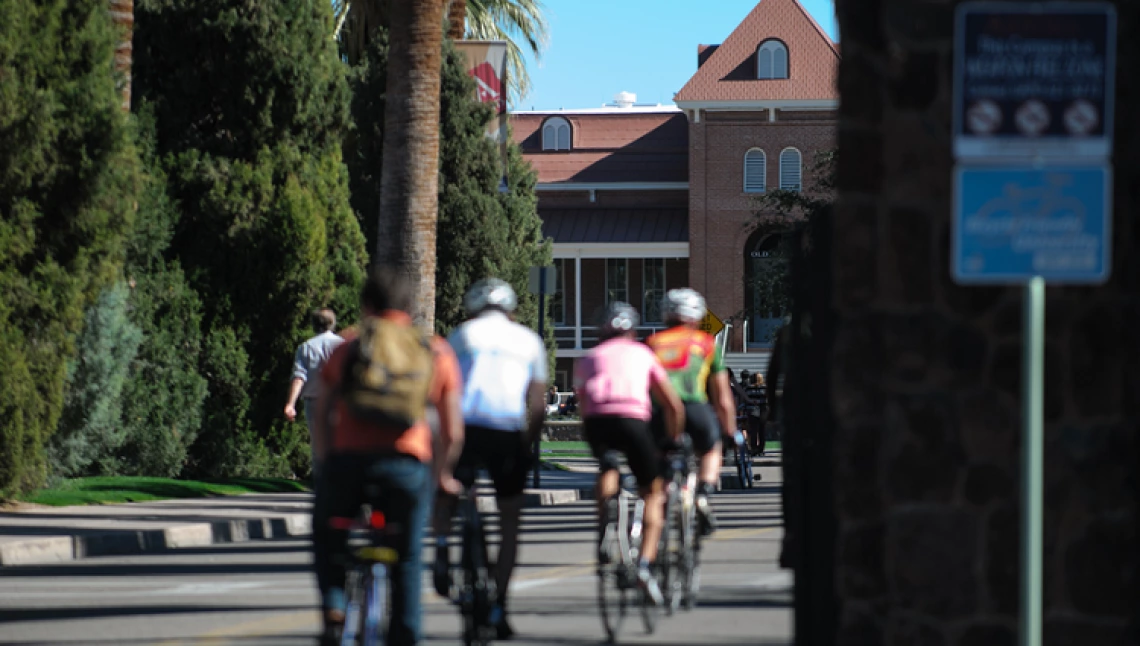Student Leading Bicycle Safety Project

Tucson is regularly listed as one of the best cities for cycling in the country. But more cyclists means more potential for accidents. An engineering capstone team is working to keep cyclists safe by developing a device that detects when a vehicle passes too closely to a cyclist. The "Cyclesafe" device, connected to a bike's handlebars, flashes an LED light to alert the car and photographs the license plate of the dangerously close car. It can even send information to the authorities when a car enters the three-foot passing radius required by Arizona law.
While an Interdisciplinary Capstone team started the project in 2019, current Team 23047 is aiming to develop a production-ready device while adding features for usability and functionality. The engineering team is 3D printing the device housing, testing security clamps, and using more powerful microcontrollers that are one-third the typical size, yet include both Wi-Fi and Bluetooth capabilities.
“We are looking to leverage this new wireless connectivity to connect to the user’s phone or even upload ride logs to a dedicated server via the user’s home Wi-Fi while the device charges,” said team lead and SIE major Jake Wern. “Due to the reduced size and cost of this processor, we can include a GPS module for geotagging locations, providing law enforcement common locations where cyclists are often impeded on.”
Wern says it’s a challenge to ensure the Cyclesafe, which uses an ultrasonic proximity sensor, will differentiate between passing cars and other objects. For the price range, the team cannot use AI object recognition. However, they can ignore some false readings, such as by detecting if a passing object is not itself moving. So far, their camera can capture license plates on vehicles traveling up to 30 mph.
